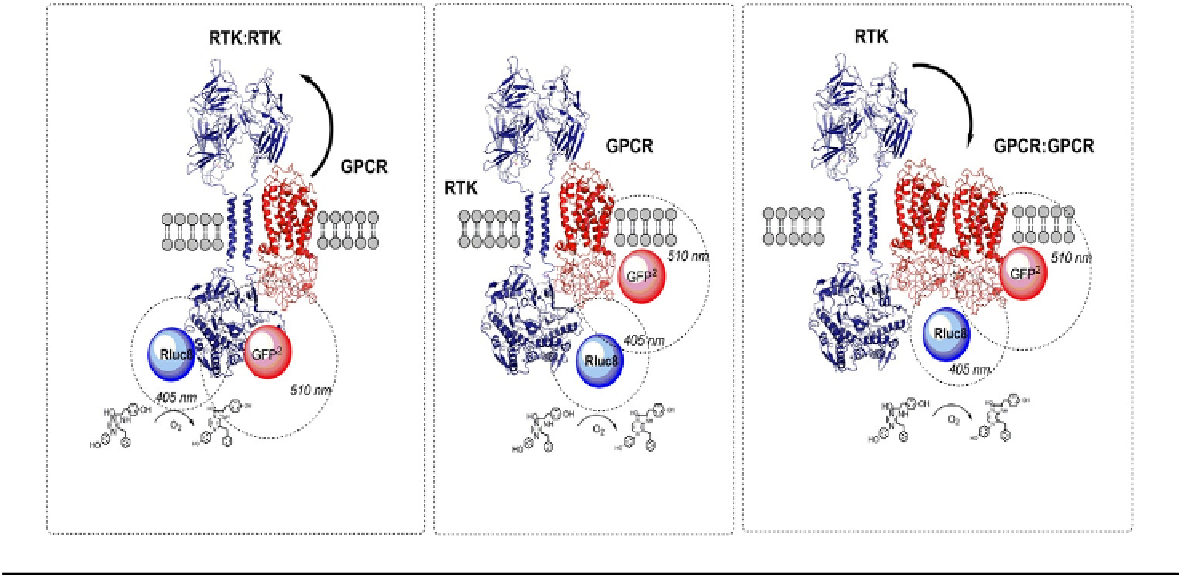Biology Reference
In-Depth Information
FIGURE 8.3
Different BRET
2
strategy assays to study GPCR-RTK heteroreceptor complexes dynamic. BRET
2
assays seem to be particularly suited for the molecular
characterization and study of GPCR-RTK heteroreceptor complexes. Using different combination of receptor-donor/acceptor-fused receptor, it could
be possible to unravel the molecular mechanisms underlying GPCR-RTK heteroreceptor complex transactivation/transinhibition processes,
internalization, and signaling. (center) For instance, it could be possible to study the existence of the GPCR-RTK heteroreceptor complexes and the
pharmacological properties of drugs acting on these important therapeutic targets using as a BRET pairs, the GPCR-fused receptor as a donor, and the
RTK-fused receptor as acceptor. (left) Furthermore, the effects of combined and single treatment with GPCR and RTK agonist on the RTK
homodimerization in cells containing the GPCR-RTK heteroreceptor complexes could be feasible. (right) In addition, the effects of combined treatment
with the GPCR and RTK agonist on GPCR receptor homodimerization in cells containing the GPCR-RTK heteroreceptor complexes could be possible.
Each of these different BRET approach could bring new light in the conformation changes and dynamic process that can take place upon agonist
treatment in the GPRC-RTK heteroreceptor complexes.

